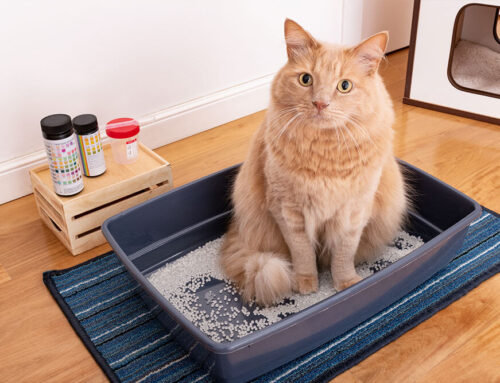As the temperature drops, you may have questions about how to keep your furry friend safe and comfortable in the cold. Low temperatures, snow, and ice can be challenging, and these weather conditions can pose serious threats to your pet’s health and safety. Our Animal Clinic of Council Bluffs team answers frequently asked questions (FAQs) about keeping pets safe during Iowa’s chilliest months.
Question: Which pets are most sensitive to the cold?
Answer: While no pet is immune to the cold, some pets are more susceptible to winter weather conditions than others. The following factors can increase a pet’s sensitivity to the cold.
- Short-haired and small pets — Small, short-haired breeds, such as Chihuahuas, greyhounds, and beagles, have less natural insulation against the cold. Small-breed dogs also tend to lose body heat more quickly than large breeds. In addition, short-haired feline breeds, such as Siamese cats, are usually extremely sensitive to cold temperatures.
- Puppies and senior pets — Extremely young and old cats and dogs often struggle to regulate their body temperature effectively, making them susceptible to the cold.
- Arthritic pets — Cold weather can exacerbate dogs’ and cats’ arthritis pain, making movement stiff and uncomfortable.
- Pets with health conditions — Pets with conditions, such as diabetes, heart disease, or hormonal imbalances, may have a low cold-temperature intolerance.
- Underweight pets — Pets lacking an adequate fat layer or muscle mass are less insulated against the cold.
Q: How cold is too cold for my pet to be outside?
A: Pets’ cold tolerance varies. The following environmental factors can affect how intensely a pet feels the cold weather:
- Temperature — Temperatures below 32 degrees are considered potentially unsafe for most pets. Pets who are especially sensitive to the cold can experience discomfort when the temperature is below 45 degrees.
- Windchill — Windy conditions can significantly increase the chill factor, making the air feel colder than the actual temperature. This can lead to heat loss in pets, making them feel colder more quickly.
- Humidity — High humidity can make low temperatures feel colder, while low humidity can dry out a pet’s skin and coat, leading to discomfort. Both conditions can impact a pet’s perception of the cold.
- Moisture — Rain, snow, or ground moisture can lower your pet’s body temperature quickly. Wet fur loses its insulating ability, making pets feel much colder.
- Cloud cover — Cloudy or overcast days can feel colder than sunny days regardless of temperature, because of the lack of sunlight.
- Ground temperature — If the ground is cold or snow covered, your pet’s body temperature can decrease quickly. This is especially true for pets with short legs whose bodies are close to the ground.
If your pet has a low cold tolerance, consider dressing them in a warm winter jacket before heading outside. Remember, the colder the temperature, the less time your pet should spend outside.
Q: Is ice-melting salt harmful to pets?
A: Yes. Many deicing products used on roads and sidewalks contain chemicals that can be harmful to pets. If your pet comes in contact with or ingests an ice melter, they can experience the following:
- Chemical burns and irritation — Some ice-melting products can cause chemical burns or irritation to the sensitive skin on your pet’s paws. This can lead to skin redness, dryness, cracking, or even bleeding.
- Toxic ingestion — When pets walk on salted surfaces, the salt and chemicals can stick to their paws. Pets often lick their paws to clean them, which means they ingest these substances. Ingestion of certain ice-melting salts can lead to gastrointestinal (GI) upset or more serious health issues.
- Dryness and cracking — Salt and other ice-melting agents’ abrasiveness can dry out the pads of your pet’s paws, leading to cracking and discomfort.
To protect your pet from ice-melting products’ harmful effects, after outings, wipe your pet’s paws with a damp towel to remove irritating chemicals. In addition, consider applying petroleum jelly to your pets’ feet or protecting their paws with booties. Also, use pet-friendly ice melt products around your home to decrease your furry pal’s exposure risk.
Q: Why is antifreeze toxic to pets?

A: Antifreeze is toxic to pets because the product usually contains ethylene glycol, which has a sweet taste that attracts many pets. Unfortunately, pets who ingest this chemical can experience severe health complications. Most pets become poisoned when they lick antifreeze that has leaked from a vehicle onto the ground or the garage floor, so regularly check around your car, and keep your pet away from parked vehicles. Pets’ antifreeze toxicity signs may include:
- Wobbling or incoordination
- Increased heart rate
- Lethargy
- Vomiting and diarrhea
- Dehydration
- Tremors
- Anorexia
- Fainting
- Low body temperature
- Increased thirst and urination
- Excess salivation
- Seizures
- Mouth ulcers or sores
- Coma
Take precautions to ensure your pet stays safe and warm during the winter months. Contact our Animal Clinic of Council Bluffs team or the Pet Poison Helpline immediately if you know or suspect that your pet has ingested antifreeze.






Leave A Comment